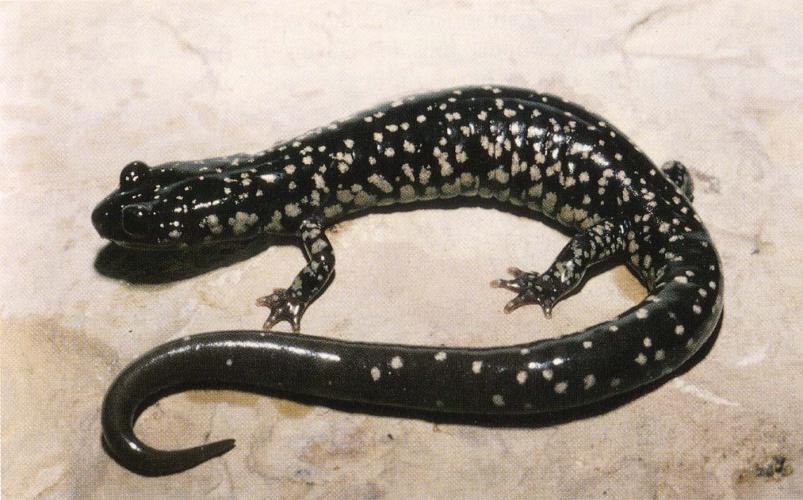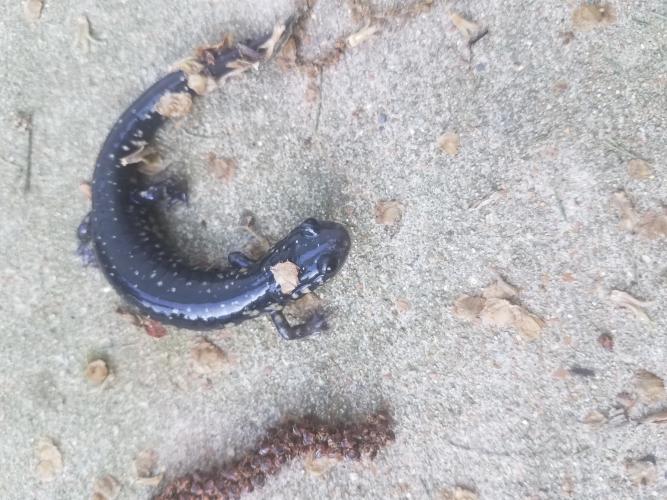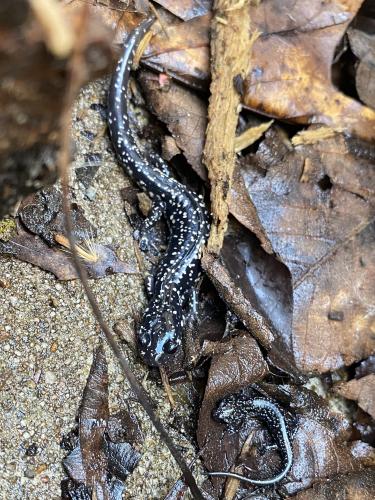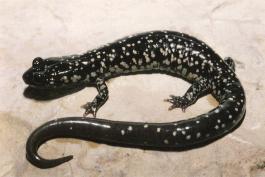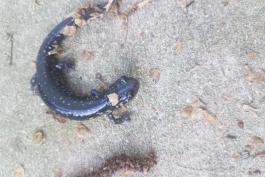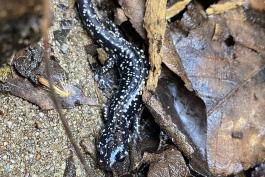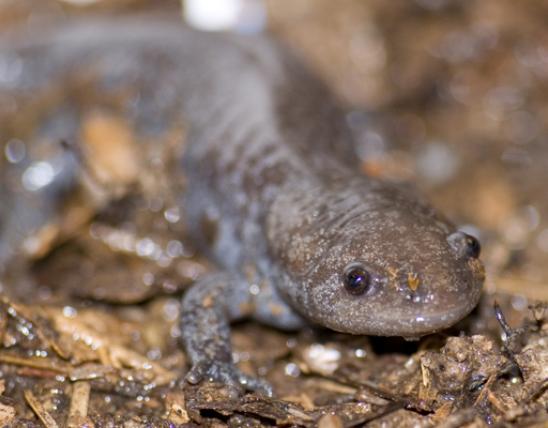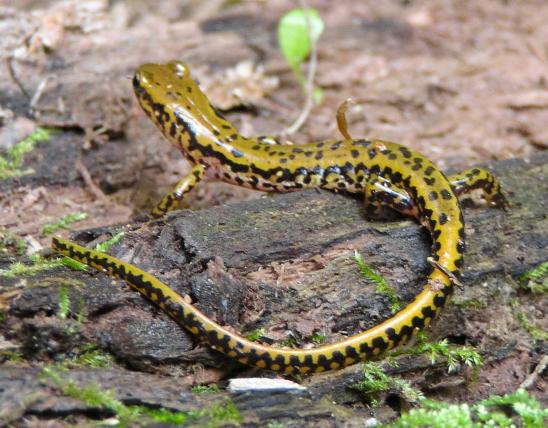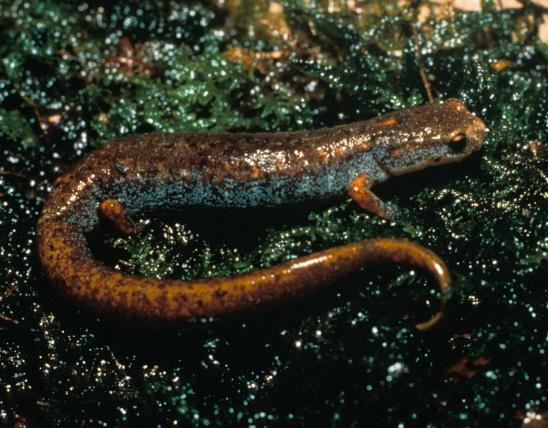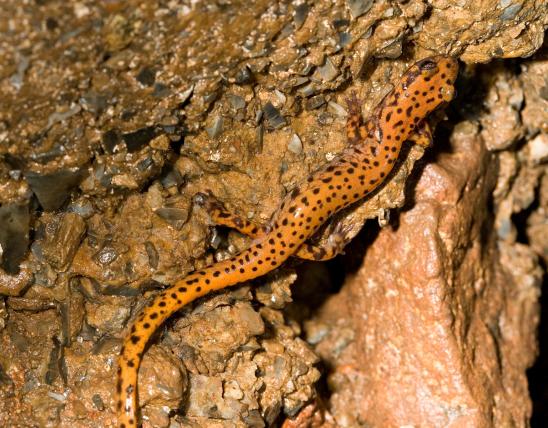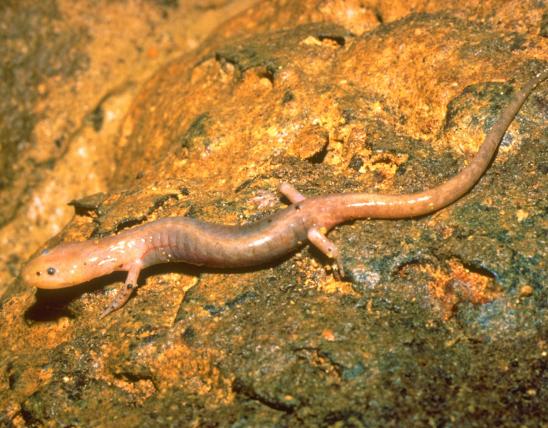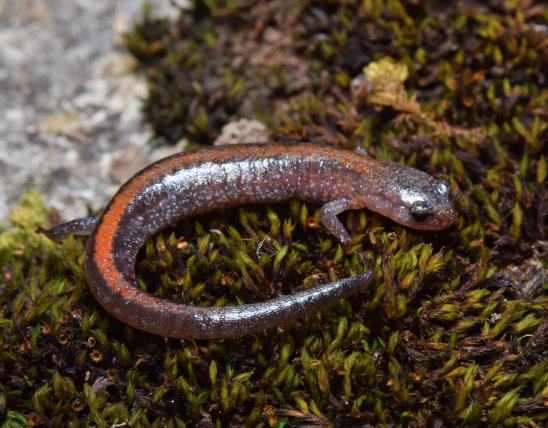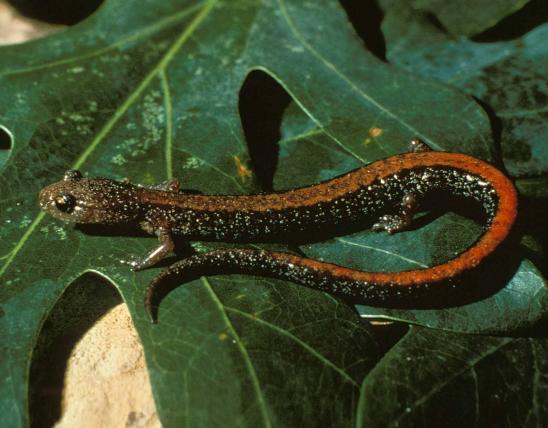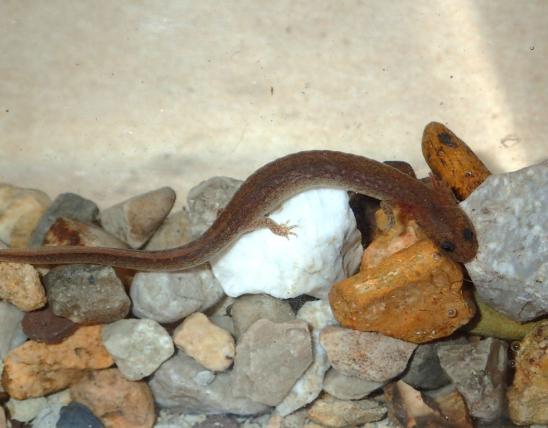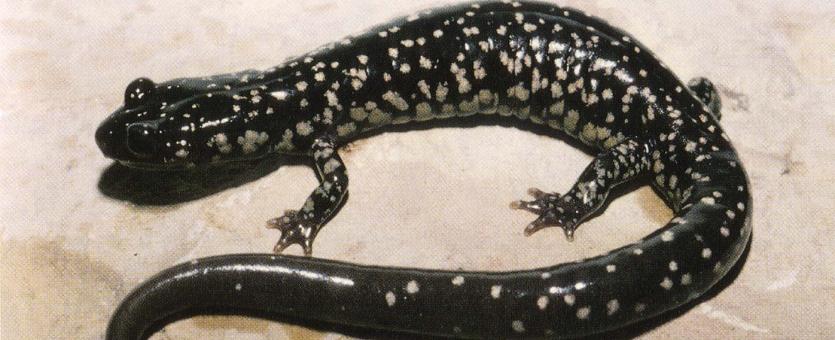
The western slimy salamander is a black to blue-black, medium-sized woodland salamander with a long, rounded tail and numerous silvery flecks irregularly distributed over the head, back, limbs, and tail. The chin and belly are dark gray. There are usually 16 costal grooves along the side, though some specimens may have 14 or 15.
This species secretes a thick, very sticky substance that adheres to skin like glue. It causes dust, dirt, or bits of dead leaves to stick to one’s hands and is difficult to remove.
Similar species: The western slimy salamander is in a group of some 13 closely related species called the Plethodon glutinosus complex; at one time, these were all considered a single species, the slimy salamander (P. glutinosus). The western slimy salamander is the only member of this group that occurs in Missouri.
Adult length: 4¾–6¾ inches; occasionally to 8 inches. This is the largest member of the lungless salamander family in Missouri.
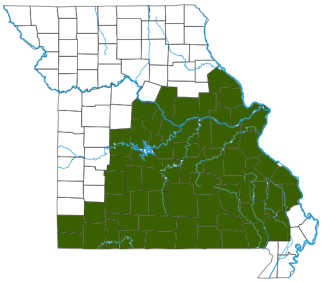
Throughout the Ozark Highlands of southern Missouri; north of the Missouri River, the range extends into the Lincoln Hills.
Habitat and Conservation
Slimy salamanders commonly live under rocks or logs in damp ravines and moist, wooded hillsides. They are most abundant in dense-canopy ravine habitat with high moisture and low sun exposure.
They are most active on the surface during cooler, wet conditions in the spring and fall, but during the hot summer months they are difficult to find. During dry summer weather, they retreat underground, especially into cool, moist caves, or they may find damp places by burrowing into large piles of leaf litter.
They venture out of hiding at night and are most active after heavy rains. This species is frequently found in caves, especially in the twilight zone where light diminishes beyond the cave entrance.
Western slimy salamanders are a common species within the forested landscapes of south-central Missouri.
Food
Western slimy salamanders are generalist feeders that eat a wide variety of small arthropods, especially ants and beetles, and worms.
Status
Common in appropriate, forested Ozark habitats.
It is important for landowners and other land managers to grasp the importance of fallen logs on the forest floor: Our state’s three species of Plethodon salamanders require rotten logs for their survival.
Life Cycle
Females lay eggs in late summer (August and September). Nests are in underground burrows, under rotten logs, in abandoned mines, and in caves. Females deposit about 8–15 or more eggs to a thin stalk suspended from the ceiling of the cavity. The eggs hang in a grapelike cluster, and the females remain with the eggs during the incubation period, about 2 or 3 months.
Brooding females generally position their bodies to physically touch the eggs, typically coiling their body or tail around the eggs, or touching the eggs with the head or trunk region. This apparently serves to deter predators, retain moisture for the developing eggs, and reduce fungal outbreaks on the eggs.
In Missouri, most eggs hatch by late December. As with other members of genus Plethodon, there is no aquatic larval stage, and the hatchlings look quite a bit like the adults, though with proportionately shorter tails.
Although some females return to the same crevice to lay eggs each year, most of the population likely has a biennial reproduction cycle, with females breeding every other year.
Human Connections
It is important that landowners and land managers understand the significance of fallen logs on the forest floor. Missouri’s three woodland species of Plethodon salamanders require rotten logs for their survival. Fallen logs located along steep, forested hillsides in the southern half of the state are especially valuable to these salamanders and other wildlife.
Ecosystem Connections
Insects often reproduce at astonishing rates, and this and many other insectivorous species naturally control their populations. And despite the sticky mucus that this salamander secretes, it certainly falls prey to larger predators.
Lungless salamanders are an important part of the ground-dwelling forest community. Because these salamanders can be quite abundant, they are the primary predator of many invertebrates and are food for larger vertebrates.
Slimy salamanders are probably very rarely killed by fire, since they hide under protective structures (such as rocks and aging logs), yet they are much less likely to be found on the surface after a fire. Apparently they retreat below ground until the surface conditions are more hospitable.
This is a member of the lungless salamander family (Plethodontidae). It’s a large family with 27 genera and about 443 species. The family probably originated in the southern Appalachian Mountains; its members now occur over the eastern half of North America, the West Coast, and into Mexico, Central America, and northern South America. A few species also occur in southern Europe and South Korea.
The lungless salamander family is named because the adults lack lungs and most lack gills; the oxygen they require is taken from their environment through the skin and mucous membrane of the mouth.
